#also the treason act of 1547 made it treason to alter henry's succession
Note
My understanding is that when the Princes died in 1483, Elizabeth of York was technically heir to the throne but no one actually considered installing her as Queen Regnant as the system just wasn't set up for that. And yet 70 years later, being a woman didn't seem such a big deal (in comparison) and everyone's major concern was the female heir's religion. Do you think that was nothing but the fluke of all Edward VI's available heirs being women (no one, afaik, thought of skipping all of them for Darnley say) or was there also something about the upheaval in Henry's reign that changed perceptions of female rule, even if subconsciously? I'm not saying it was an ideal situation, but the fact it became even feasible, compared to less than a century ago, I find really interesting. I was thinking that, given how long it took for Henry to have a male heir, and the Pilgrimage of Grace's call for Mary to be reinstated, plus her initial popularity as queen, maybe the average person had accepted by c 1527 that they would have a queen next, and even that kind of uncharted territory was preferable to all the turmoil that came trying to get a male heir. I mean, to many people, Mary becoming queen was probably better than losing the social safety net monasteries provided. And with Katherine of Aragon and Anne Boleyn, no matter if you hated them, they were both impressive, resilient figures so maybe people expected their daughters would be the same.
Imo, it wasn't really a 'fluke' insofar as it was that (although there was some instability in the order changing...at first Elizabeth at the total exclusion of Mary, and then the total exclusion of both, and then the inclusion of both, but with Mary over Elizabeth) Mary and Elizabeth had both been made heirs to the throne by Acts of Parliament, and several Henrician measures had greatly strengthened the power of Parliament by that point. The final Act of Succession included Edward, Mary, and Elizabeth, and their heirs. Beyond this, Henry's will did include the proviso that if all of the above died, the throne would pass to the heirs of Frances Grey (but not Frances herself...), and that if all these heirs died, the throne would pass to the heirs of Eleanor Clifford. Margaret Tudor's lineage was not present as potential heirs in either his will or this final Act, and so it doesn't seem Darnley as heir was ever really...bruited.
I was thinking that, given how long it took for Henry to have a male heir, and the Pilgrimage of Grace's call for Mary to be reinstated, plus her initial popularity as queen, maybe the average person had accepted by c 1527 that they would have a queen next, and even that kind of uncharted territory was preferable to all the turmoil that came trying to get a male heir. I mean, to many people, Mary becoming queen was probably better than losing the social safety net monasteries provided.
I mean, I think this depended. The average person, even the average professed religious person, as this book I've been reading recently has argued (Dissolution of the Monasteries, by Clark), also accepted the English supremacy without demur. Entertaining the counterfactual of essentially, what if Henry sat on his hands re: (male) succession 1527-... the court divisions would probably have centered around what marriage alliance their Princess should enter. Or, separate court factions would have emerged supporting Fitzroy versus Mary. The matter wouldn't have necessarily 'settled', even if Henry had been more indecisive about it, for longer.
Those two weren't really inextricably linked, though? Dissolution of the religious houses began on a smaller scale while Princess Mary was still heir, under Wolsey's auspices. Their examination and valuation took place while she had yet to swear to the Oaths, which strengthened her position abroad and emboldened her adherents, the Act for the Dissolution of Smaller Monasteries took place during this period, as well. Their pace was likely to continue regardless of whatever outcome came from her either signing, as she did, the Oaths, or whether she did not.
Tl; dr, while Mary's reinstatement was included on their list of demands, it wasn't necessarily seen in the mind of every person that the Dissolution had only come about due to her disinheritance, particularly because Elizabeth was enshrined as heir two years prior by Parliament, which effectively disinherited Mary.
Again, it would depend on who you asked, there would have also been many that said 'turmoil' over the quest for a legitimate prince was a far better alternative than civil war (especially as it came to pass, and no interdict on trade was actually imposed as consequence for Henry and sundry of pretty much every level of government below him, flipping the bird at the papal briefs being sent). I've mentioned this before, but the Act enshrining Elizabeth as Princess and heir apparent passed by the House of Lords and the House of Commons, which could not have happened had there not been an overall majority vote for both. And in 1536, the Act which barred Mary and Elizabeth from the throne on the grounds of illegitimacy, and vested it in the future children of Henry VIII & Jane Seymour (or any future wife), passed in the same manner. So, as much as this is said to demonstrate that the popular belief was that one Princess was much the same as another, but that Mary would of course always be preferred...well, was it true to the extent that it's argued, that simply wouldn't have passed in Parliament.
I don't think their capability of rule was really assumed based on the characters of their mothers, persay? More that the court factions of their mothers did survive (well, several of them did, several did not), in some sense and form, they made up much of Mary I's adherents and Elizabeth's protectors (mainly, of her maternal family) during the Marian era, and later her own adherents during the Elizabethan era. There was always still the sense that male inheritance was preferred, to wit:
❝ By mid-January 1554, the many rumours circulating about the proposed four-pronged uprising against Mary frequently mentioned Elizabeth’s name. One conspirator thought that although ‘we ought not have a woman bear the sword…[but] if a woman bear a sword, Lady Elizabeth ought to bear it first.’
-Elizabeth I ,Richards, Judith M.
Regardless of whether the person in question was either an adherent of Mary or Elizabeth, that caveat ('a woman ought not to bear the sword [if it could be helped]' or some variation thereof) was almost always either explictly given or implicit. Many of the similar statements recorded during the Henrician era, of dissidents who said that Mary should take the throne, almost always had the detail that she should or would do this after marrying Reginald Pole, or Charles V, or some other named man with some blood claim to either the English throne or another (iirc, Ferdinand, the King of the Romans, was also mentioned, once); just as the conspirators of Wyatt's Rebellion planned for Elizabeth to wed Edward Courtenay.
#anon#also i've recently learned from that book: apparently bigod#had actually planned to proclaim mary england's queen (in 1537)#whiiiich makes henry's reprisals of bigod's rebellion make a lot more sense.#there's not really a way for his daughter to be proclaimed queen unless he's deposed and killed#it should then be considered; imo; comparable with mary's response to wyatt's rebellion#but i digress.#also the treason act of 1547 made it treason to alter henry's succession#and edward vi hadn't had the chance to overturn this... sooooooooo#buh bye jane grey#(sorry. that was dark. but truly. )#as much as isabella is held up as a counter example; this wasn't exclusive to england either#it's unlikely she could have taken the castilian throne unmarried. that is not in fact a thing that happened. so#mary broke precedent by taking the throne unmarried and elizabeth broke precedent by keeping the throne unmarried
4 notes
·
View notes
Text


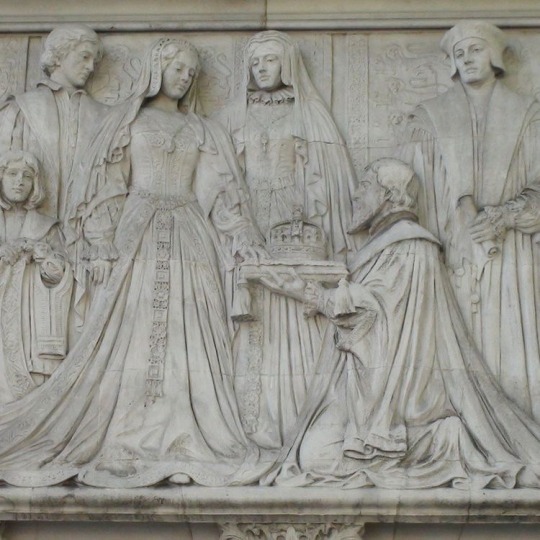
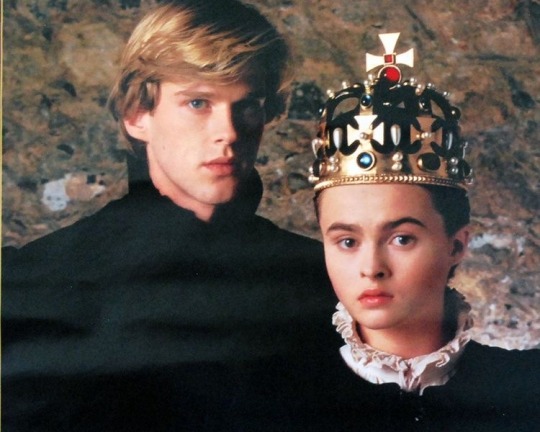
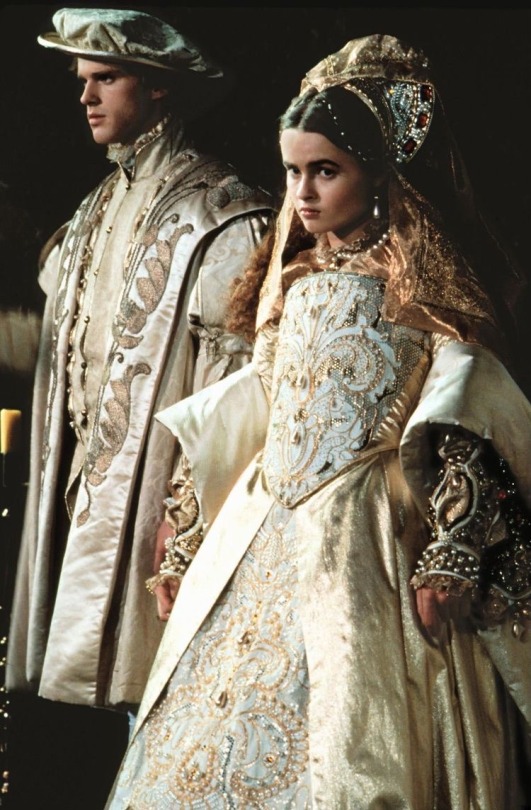
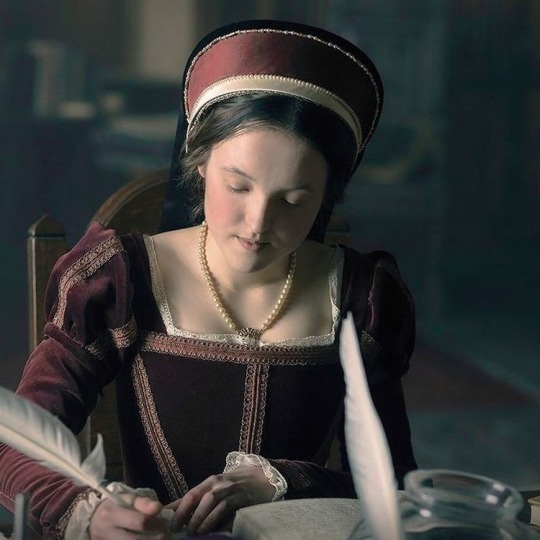
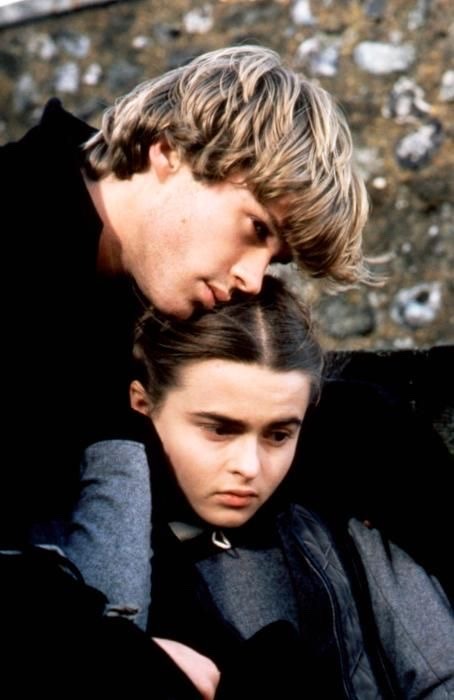
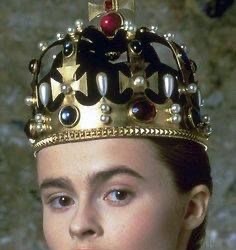


Queen/Lady Jane Grey (The Queen for Nine Days)
Lady Jane Grey, later known as Lady Jane Dudley after her marriage and then she was known as the "Nine Days Queen". She was an english noblewoman who claimed the throne of England and Ireland from July 10 - July 19 1553.
She was the great granddaughter of Henry VII through his younger daughter Mary, making her first cousin once removed of Edward VI (Henry's son and successor)
She has an excellent humanist education, and a reputation as one of the most learned women of her day. She was married in May 1553 to Lord Guildford Dudley, a younger son of Edward's chief minister.
June 1553, Edward VI wrote his will nominating Jane and her male heris as successors to the crown upon his death, this was in part do to religion that differed between himself and his half sister Mary Tudor who was supposed to succeed him according to Henry VIII's will. This change would not only remove his half sister Mary but also his half sister Elizabeth Tudor from the line of sucession on account of their illegitimacy.
After Edwards death, Jane was proclaimed queen on July 10th 1553 and awaited her coronation in the Tower of London. Support for Mary quickly grew while most of Jane's supporters abandoned her - including the English government. The privy council proclaimed Mary Tudor as Queen on July 19th 1553, deposing Jane.
Her prime supporter and Edwards old chied minister (Jane's father in law) was accused of treason and executed less than a month later.
Jans on the otherhand was held prisoner in the Tower of London and was convicted of high treason in November 1553 - a death sentence in of its own.
Mary initially spared her life. However Jane soon became viewed as a threat to the crown when her father, Henry Grey became involved with the Wyatt's rebellion against Queen Mary's intention to marry Philip of Spain.
Jane and her husband were executed on February 12th 1554, at the time of her death Jane was only either 16 or 17 years old.
Jane was the eldest daughter of Henry Grey, 1st Duke of Suffolk with his wife Frances Brandon. No one knows exactly when she was born though there are many theories; October of '37, May of '37, May of '36, or February of '37.
Jane's mother was the eldest daughter of Henry the eighths younger sister, Mary. Jane also had two younger sisters; Lady Katherine and Lady Mary Grey.
She spoke Latin and Greek from an early age, she also studied Hebrew and Italian as well. She was a commited protestant.
She much preferred academic studies as apposed to activities such as hunting parties. She may even have believed her strict upbringing, something very common at the time, to have been too harsh.
Around February 1547, Jane was sent to live in je household of Edward VI’s uncle, Thomas Seymour, who was soon to be married to Catherine Parr. Henry VIII’s widow.
She was an attendant to Catherine up until her death during childbirth in September of 1548. She was close to Catherine and was even involved in her funeral
When Thomas Seymour was convicted of treason, Jane proceeded to return home and continue her studies.
Throughout her life she had a few engagement talks but nothing was made of them until May 25th 1553. That same day the couple was married at Durham House in a triple wedding. The wedding of on of each of the couples sisters was also happening.
The third succession act of 1544 restored Henry VIIIs daughters to the line of succession although they were still regarded illegitimate. This act also gave Henry the ability to alter the line of succession through his will. It reinforced the succession of his three children and declared should none of them leave descendants the throne was to be passed to heirs of his younger sister, this included Jane.
For unknown reasons when making the succession, Henry excluded Jane's mother as well as the claims of his own older sister.
During Henry's reign both of his daughters had been named illegitament when his marriages to their mothers were declared void.
15 year old Edward VI lay dying in the summer of 1553, with Mary still as his pressumed heir. Edward however in a draft will ("my devise for the succession") which was composed in early 1553, had first restricted the succession to (non-extistant) male descendants of Frances Brandon and her daughters, before he named his protestant cousin. "Lady Jane and her male heirs" as his successors.
Probably in June 1553 the intent was to ensure his protestant legacy - removing Mary who was a devoted Roman Catholic
Edward personally supervised the copying of his will which was issued on June 21st and signed by 102 notables. He also announced to have his "declaration" passed in parliament in September.
The King died on July 6th 1553, however his death was not announced for four days. On the 9th, Jane was informed she was now queen - claiming to accept the crown only with reluctance.
The 10th, she was officially proclaimed Queen of England, France, and Ireland. After she had taken up a secured residence within the Tower of London (usually where monarchs lived from time of accession until coronation). Jane refused to name her husband as king, since it would require an Act of Parliment.
A goal of many at this time was to isollate and attempt to capture Mary Tudor to stop her from gaining any further support.
When Mary was sure of the demise of her half brother, she left her residence at Hunsdon and set eyes for East Anglia where she began to rally her support.
Jane is often labelled the Nine Days Queen, although her technically reign goes from Edwards true death on the 6th - making it a few days longer. July 19th Jane is imprisoned in the Tower's gentlemen gaoler's apartments while her husband was in the Beauchamp Tower.
September parliament declared Mary the rightful successor and denounced and revoked Jane's proclaimation as that of a usuper.
Jane was charged with high treason as were her husband, two of his brothers, the former archbishop of Canterbury, and Thomas Crammer.
Trial by special commission took place in November 13th 1553, as to be expected all defendants were found guilty and sentenced to death. Jane's guilt of having treacherously assumed the title and power of a monarch, with evidence of a number of documents she signed as "Jane the Quene".
Her sentence was to "be burned alive on Tower Hill or beheaded as the Queen pleases."
Burning was traditional english punishment for treason when it was committed by a woman.
The imperial ambassador reported to Charles V, Holy Roman Emperor, that her life was ro be spared by Queen Mary.
Wyatt's rebellion in January 1554 against Queen Mary's marriage plans with Philip of Spain however sealed Jane's fate in a different way. Her father, Henry Grey and his two brothers joined the rebellion, and so the government and Queen Mary decided to go through with there verdict for Jane ans her husband.
Their executions were first seceduled for February 9th 1554 but was postponed for three days to give Jane a chance to convert to the Catholic faith.
On the morning of February 12 1554 they took Guildford from his rooms within the Tower of London to the public execution place on Tower Hill where he was then beheaded. his remains were brought back to the tower past Jane's rooms, she was then taken out to Tower Green inside the Tower to be beheaded.
She made a speech as she ascended the scaffold, the resighted Psalm 51 (have mercy upon me, o god). She handed her gloves and handkerchief to her maids. The executioner asked her for forgiveness which she granted. she then blindforlded herself. She failed to find the block by hand and cried out, once helped with her head upon the block Jane spoke her last words.
"Lord into thy hands i commend my spirit." the axe then fell beheading the young girl in one clean stroke.
Jane and her husband were buried in the Chapel of St Peter ad Vincula on the north side of the tower green. No memorial stone was erected at their grave.
Jane's father was executed 11 days after Jane on the 23rd of February 1554.
Her mother, Duchess of Suffolk married her Master of Horse and Chamberlain - Adrian Stokes in March of 1555. She was fully pardoned by Queen Mary and allowed to live at court with her two surviving daughters. She died in 1559.
During Mary's reign Jane became viewed as a protestant martyr for centuries to come.
#college student#college life#chronicles of a sick person#adult ish#social distancing#long live the queue#it was always queue#all queued up#college#lady jane grey#jane grey#queen Jane grey#queen of england#england#elizabeth tudor#mary tudor#queen mary#bloody mary#queen mary i#queen elizabeth i of england#edward tudor#king Edward#king of england#history#history facts#english history#historical
13 notes
·
View notes